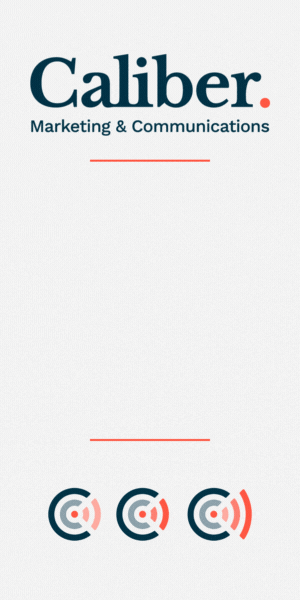AI, vibe coding & agents: A guide for insurance executives
/Tiffine Wang, CEO of Onsen Global, is a venture capitalist focused on AI and tech, along with board advisory.
Why AI Integration has been so difficult for carriers
Artificial intelligence has been part of the insurance conversation for years, but real integration inside large carriers remains difficult. The reasons are familiar: complex internal systems, regulatory pressure, fragmented data and long implementation cycles. Even when executive interest is strong, progress is often slowed by technical constraints, risk controls and competing priorities.
However, carriers are recognizing that traditional, large-scale transformation programs are often slow and rigid in the face of today’s rapid advancements in AI. As a result, many are starting to explore more focused and adaptive approaches. They are integrating AI into specific high-value workflows where progress can be made quickly and lessons can inform broader adoption. This shift reflects a strategic move to balance innovation with operational stability while preparing the enterprise for more intelligent and responsive systems.
An AI-native approach
An AI-native company is not simply using AI. It is structured with AI in mind from the beginning. These organizations design their workflows, data models and decision-making logic to be intelligent, adaptive and automated from day one.
After working closely with many AI-native teams, a clear pattern has emerged. Early-stage organizations are often composed of highly technical, systems-oriented individuals. About 70% to 80% of the founding team typically consists of engineers and AI specialists, with fewer nontechnical roles early on. Sales and business development are not ignored, but they are often automated early through outbound systems, onboarding flows and intelligent support tools.
As a result, internal operations such as coordination, reporting and go-to-market activities run with minimal manual effort. This provides speed, scalability, and structural leverage that feels distinctly different from traditional organizations. Carriers can use AI-native companies as reference points, understanding how intelligence embedded early can inform more effective internal adoption.
Why insurtechs are moving faster
Insurtechs face different pressures. With small teams, limited budgets, and constant delivery demands, they cannot rely on long planning cycles or deep internal resources. Many also struggle to raise venture capital, particularly in segments like MGAs, which typically don’t align with traditional high-growth venture expectations.
To move quickly, these teams adopt AI tools, including foundational models, classification APIs, lightweight agents and, increasingly, no-code and low-code platforms. Automation is not a future goal for them. It is how they operate daily.
One emerging approach is called vibe coding. Vibe coding enables nonengineers to build AI tools using natural language prompts, drag-and-drop interfaces or visual workflows. A product or operations lead can create a document parser, triage bot or claims assistant in hours, without needing developers. These tools are already in production and becoming easier to use. Insurtechs adopt them out of necessity, giving carriers a preview of how automation can streamline decision-making and cut cycle time.
Understanding these emerging tools allows carriers to experiment without waiting for full-scale integrations.
How carriers can prototype AI with low risk
Carriers can apply these same tools safely to explore new ideas. No code platforms and vibe coding reduce the burden on technical teams and empower business users to test solutions directly. A claims manager might prototype a smart intake form. A compliance analyst could trial a document review assistant. These prototypes clarify requirements, demonstrate value early, and generate alignment across teams without immediate integration into core systems.
For example, one carrier recently tested an AI agent that flagged missing attachments in commercial quote submissions, cutting review time by 40%. Another used a no-code tool to triage inbound broker emails, improving response rates within weeks. By experimenting closer to the work itself, this approach avoids many traditional enterprise innovation blockers.
Achieving stakeholder alignment
Stakeholder alignment and collaboration can be particularly challenging in large organizations due to complex hierarchies, competing priorities, and varying departmental goals. Unlike smaller AI-native companies, large carriers need to intentionally create structured collaboration processes. Successful pilots often involve a triad: a business lead who understands the workflow, a technology partner who manages tooling and access, and a compliance or risk manager who ensures standards are met. Though more complex to establish, this shared ownership creates the foundation for scale.
By involving the right stakeholders early, carriers accelerate internal buy-in, reduce friction and uncover practical insights to shape a sustainable AI strategy.
Responsible adoption and scaling
Carriers need clear governance frameworks for safe AI deployment, including transparent model explainability and auditable decision logs to meet regulatory scrutiny. Early involvement from compliance teams ensures smoother approvals, reduces risk and builds trust.
Successful pilots also need clear paths to integration within enterprise IT ecosystems. Documenting interfaces, creating reusable templates and establishing evaluation frameworks streamline broader adoption. Learning from early adopters that transitioned successfully from pilot to full-scale deployment can significantly inform carrier strategies.
Usability, multi-agent modalities and evaluation of AI tools
Usability continues to be one of the most underestimated barriers to AI adoption. Multi-channel prompting (MCP) improves accessibility by allowing users to engage through everyday methods such as typing, speaking, uploading documents or sharing screenshots.. This type of interaction reduces friction and embeds AI naturally into existing workflows. Thus, evaluating these tools cannot be limited to how a single agent performs. The real value emerges when looking at how well they operate within an integrated workflow system.
Talent and culture implications
As intelligent workflows become embedded across insurance operations, the workforce must adapt to new expectations. Business teams will need to develop fluency in AI tools, gaining confidence in experimenting with no-code platforms and automation frameworks. Technical teams will increasingly focus on enablement, governance and cross-functional support rather than centralized control. This evolution requires targeted reskilling, new forms of collaboration and a mindset that embraces iterative improvement. Carriers that create a structured environment for experimentation will strengthen internal capabilities. This is not simply a technical rollout but an organizational shift that depends on operational fluency, empathy for users and a systems-oriented mindset.
The future outlook for AI-native carriers
Over the next few years, insurance carriers that adopt AI are expected to operate as intelligent systems that adapt continuously based on context, data usage and changing business needs. Multiple AI agents, which are autonomous or semi-autonomous systems built to perform specific tasks, will support core areas such as underwriting, claims, compliance and customer service. These agents will handle structured, repetitive tasks within defined workflows, while human teams focus on judgment-based decisions, exception handling and client strategy.
AI is already changing the way we interact with the internet. With MCP enabling natural inputs like text, voice, documents and images, AI can become embedded in everyday workflows. While the pace of development is fast and the future remains uncertain, carriers that adopt flexible systems and thoughtful AI management may be better positioned to adjust as new capabilities emerge.






